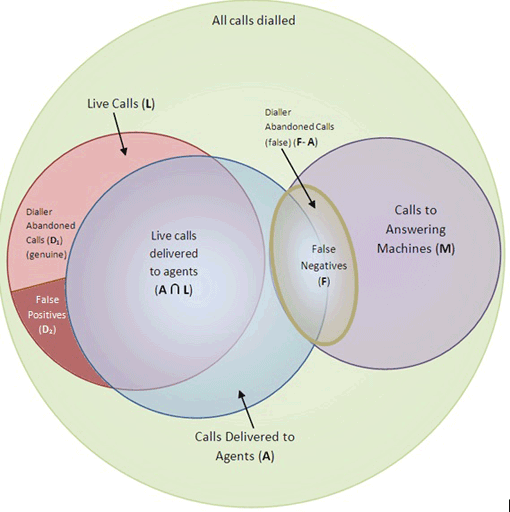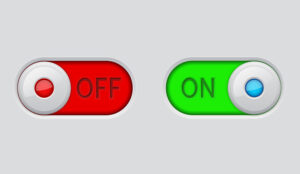The debate on answer machine detection has been raging for years. We ask our panel of experts for their advice on whether answer machine detection should be turned on or off.
Read on to see what they said.
The panel is split overall, with 5 proposing it should be turned off and 3 advocating keeping it turned on.
Opinion 1 – Yes, it should be turned off
Since the introduction of Ofcom legislation in 2006, and the tightening of this legislation in 2010, organisations have been trying to find ways to operate within Ofcom’s rules and still use their answer machine detection technology. It was in this latest round of legislation that we believe a tipping point was reached that made the use of AMD impractical.
Having two seconds available from the end of salutation enabled the better AMD technologies to still operate accurately with minimal false positives. However, the change to two seconds from off hook, along with the other modifications to the legislation, resulted in a requirement for complex false positive measurement controls and testing by the operator.
This empirical requirement – coupled with the reduction in time to accurately detect live connects – means that AMD now brings lots of pain with very little gain for dialler operators.
Even best in class AMD solutions are only successful less than 5% of the time when operating within the latest OFCOM legislation. Indeed, at Sabio we’ve seen sub 2% success rates at some of the organisations we have worked with. The overhead associated with the calculation of false positives, adjustment of abandoned call measurement and re-processing of calls classified as answer machines is much harder to justify when the benefits/returns are so little.
Operators could, of course, still choose to operate with extended AMD classification time. However, they run the risk of huge fines and significant brand damage. It’s a risk that shouldn’t be taken. Instead, organisations need to look to other ways to maximise efficiencies – such as targeted campaigns at specific times of the day, analysing data thoroughly and examining trends.
The future for dialler efficiency wouldn’t be completely bleak were UK network providers to follow the lead of their US counterparts and adopt network answer machine detection – in conjunction with network-provided answer machines. However, until such time as AMD technology improves, network providers catch up with the USA, or Ofcom legislation is relaxed, UK operators should accept that AMD is no longer an effective approach.
Mark Hamblin, Head of Avaya Practice, Sabio – (www.sabio.co.uk)
Opinion 2 – The rules all but preclude the use of AMD
Most answer machine detection (AMD) algorithms to date are based on what is known as the “cadence method”. This is a heuristic type of algorithm that tries to deduce from the patterns of noise and silence on the line whether an automated message is being played when a call is connected.
To make things more challenging, the Ofcom regulations stipulate that the longest allowed period of time between a call being answered and the same call being presented to an agent is 2 seconds. This means that the AMD algorithm needs to make a decision as to the live nature of a call well inside the allowed 2-second period and is usually limited to somewhere around 1.5 seconds.
I would very much doubt anyone who may claim that they (as intelligent humans) are able to accurately determine each and every time whether they are speaking to another human being or a machine within less than 1.5 seconds. It is therefore unavoidable that any algorithmic method will have a significant error rate.

When a live call is misidentified as a call to an answering device, such a call is defined to be a “false positive” (in the sense that a positive identification of an answering machine was made but it turns out to be false). False positives are nasty, as they result in silent calls that the dialler is not aware of.
The latest regulations from Ofcom regarding the use of AMD have all but eradicated the use of the cadence method for AMD as they place the onus on the users rather than the manufacturers of dialling equipment to take false positives into account when calculating their overall abandoned (silent) call rates.
Therefore, users are faced with a stark choice between the benefits of AMD and the benefits of predictive dialling. The rules all but preclude the use of both simultaneously as the use of AMD forces responsible users to slow down their predictive diallers to very safe (and therefore rather slow) parameters. The recent increase in the size of the maximum fine for misuse to £2million has resulted in most users thinking twice before considering stretching the rules.

Danny Singer
Perhaps the time is right for some lateral thinking. At Noetica, we are working on some promising new research into ways of allowing the users of our technology to have their cake and eat it, by allowing them to use new, safe ways of filtering out answering machines without affecting the performance of the predictive dialler. Watch this space.
Danny Singer, Managing Director of Noetica – (www.noetica.com)
Opinion 3 – When turned on, AMD leads to a big increase in productivity
AMD is a tool, and like all tools, used in the right way with the right monitoring, it can really drive productivity and improve the quality of calls – agents are more confident that the next call will be a customer rather than another answering machine, and there is less ‘lag’ in the agents as a result.
Without AMD turned on, the agents start to glaze over and productivity dips on those calls that are productive.
Not only that, but there are ways around the false-positive issue; something as simple as an automated IVR routing mechanism handling suspect false positives, which gives the customer a simple message to pass to an agent, with a couple of agents assigned to the inbound service ensures that the false positive issues are essentially moot – a real bone of contention.
Where the system is in doubt over the validity of an answer machine, a message is played to the line; along the lines of ‘Hello. This is [Company_Name]. Please press any button’.
This automatically then routes to a waiting agent when a customer presses a button, but cuts off the call if there has not been a response within a time limit. This mechanism ensures that there are no silent answer machine messages.
This provides a closed-loop solution for the use of AMD and effectively invalidates many common concerns (within reason!).
The issue that companies face when opting for this solution is that agents must be allocated to deal with these calls coming in from an outbound service and you must be able to guarantee an agent is available. The investment into this is not insignificant, but the pay-off is absolute peace of mind.
All-in, we use AMD and see a massive ROI in terms of productivity, customer satisfaction, etc.
Sean McIver
Opinion 4 – AMD does not work effectively under the Ofcom rules
There is not a jot of information in the public domain showing that AMD works effectively under Ofcom rules. And it won’t be forthcoming.
So long as Ofcom rules stipulate a 3% silent calls limit, and AMD is based on cadence detection, then AMD cannot deliver. No amount of vendor posturing, marketing claims or patent applications is going to change this. I suspect that, as with most dialler vendors, everyone in Ofcom knows this too.
The really interesting question is why doesn’t Ofcom ban AMD?
Well, they have had such a battering from some quarters insisting on their RIGHT to either sell or deploy AMD that they have probably been scared off a bit. Not that surprising when they have been accused of undermining the profitability of British business in these tough times.
But that was always a poor argument and has now become a non-argument with the concession made to the Collections industry to use interactive voice messaging to front their outbound calls.

Michael McKinlay
It’s time for Ofcom to have a more measured view of their responsibilities. They have addressed the concerns of the Collections lobby in a fair way. Now let them focus on what is right and best for consumers outside of Collections. Often forgotten about, these consumers don’t deserve any silent calls and they don’t deserve to be put in a queue whilst a dialler tries to figure out whether or not they are a machine.
Action now to ban AMD will not only be welcomed by consumers, but should lead to healthier outbound campaigns as consumers are more responsive when connected immediately to agents.
Michael McKinlay, Sytel
Opinion 5 – AMD certainly hasn’t been banned
While more difficult to use than before, AMD certainly hasn’t been banned (as I heard someone suggest recently) and with the productivity benefits it delivers there’s certainly a compelling case for it to be used.
When I ran a dialler for a large financial organisation I reviewed the impact of turning AMD off, and approximated it to be around a 28% drop in performance. While more intelligent data strategies mitigated some of this, we still saw around a 20% reduction. Some organisations have seen little or no impact, but I expect this really depends on the accuracy of AMD in the first place and how aggressively the data was recycled.
Most contact centre managers are acutely aware of how few conversations their agents are having; instead they are wading through what seems to be an endless sea of answering machines. While the impact of this on the business can be measured, the effect on agent morale and costly attrition, hiring and re-training probably can’t be, as it is much more indirect.
Recently the topic of network-based AMD was raised to mixed feelings. Yes, it exists, but until a greater consensus or industry-backed working party are able to challenge the telcos or increase Ofcom’s scrutiny, it’s down to the dialler manufacturers to get this introduced; but even then it’s only network based (think BT 1571 or mobile voicemail) so won’t cover the customer’s own home answer machine.
Another issue is that with very few (if any) vendors headquartered out of the UK, only a minority has taken the time or R&D effort required to ensure compliance with UK regulations. In many respects, why should they? The lion’s share of outbound seats aren’t in the UK, nor are the regulations easy to comply with. However, as end users of technology ourselves, shouldn’t we expect and demand it? The US has some difficult regulations around contact strategies, and my assumption is that the larger players are investing R&D into ensuring compliance for this, so why not with Ofcom?

Dave Ogden
I know that most of you reading this will have turned AMD off and probably have no plans to turn it back on.
Automated dialling was always supposed to provide the most efficient method of proactively contacting customers, but due to poor R&D investment, coupled with fear and confusion, we’ve come to accept something less than optimal and I think that’s disappointing.
Dave Ogden, Solutions Consultant at Aspect (www.aspect.com)
Opinion 6 – YES answer machine detection should be turned off
The risks of using AMD for a predictive dialling campaign outweigh the benefits. Rostrvm’s research has shown that, under Ofcom’s rules, if you want to make more than one dial attempt in 24 hours, keeping AMD turned on will cost you efficiency.
In a typical scenario:
Agent Time Overhead – Predictive dialling with AMD
Call 1: 10:00 – reach Answer Machine – 0 seconds agent time
Call 2: 14:00 – reach Answer Machine again – 22 seconds agent time (17 seconds listening to ringing and 5 seconds recording answer machine outcome)
Call 3: 18:00 – make contact – 8 seconds listening to ringing before connection
Agent Time Overhead – predictive dialling without AMD
Call 1: 10:00 – reach Answer Machine – 5 seconds agent time recording answer machine connection outcome
Call 2: 14.00 – reach Answer Machine again – 5 seconds agent time recording answer machine connection outcome
Call 3: 18:00 – make contact – 0 seconds
With AMD turned on your agent spends 30 seconds making contact, whilst when AMD is off it’s a more efficient 10 seconds – more agent time is required when AMD is turned on.
AMD can also have a negative impact on perceived agent productivity. If the number of agents on the campaign is low but it’s running at a time with high answer machine contact rates, agents might be twiddling their thumbs waiting for a live call, whilst the dialler is dealing with answer machines.
AMD can prevent agents from speaking to an available customer! AMD sometimes wrongly deduces that a live answer is an answering machine and disconnects the call, leaving your precious available contact irritated and your business with a missed chance to make that sale, collect a debt, etc.
Also, with AMD, a short delay occurs between someone answering a call and the agent being connected. Many people have got wise to this delay and simply hang up – another lost opportunity.

Ken Reid
It’s true that without AMD call centre agents will have to handle answer machines but listening to the answer machine message may provide them with a valuable mobile number for their contact – so it may work in their favour.
Also, Rostrvm has developed a new facility to offset the downside of listening to answer machines by delivering more ‘live’ connects. Our software can be configured to automatically differentiate between a probable ‘no answer’ answer machine – the call rang for a long time before the recorded message – and a ‘this-person-is-busy’ message where the time before the message was short. The system will then treat ‘busy’ answer machines differently from ‘no answer’ answer machines, increasing the overall probability of live connects during a campaign.
Ken Reid, Rostrvm Solutions
Opinion 7 – Turned on but throttled back
It is time to stop asking this question of whether answering machine detection (AMD) should be switched on or off. The answer to the question is: neither on nor off. It should be adjusted.
Specifically, it should be adjusted to ‘just the right level’ between fully on and fully off. In other words, it should be set to comply with the regulatory environment in which it operates and for the campaigns upon which it is being used.
We continually adjust our car’s speed to the environment in which it operates. We take account of the legal jurisdiction, speed limits and road conditions. The driver’s right foot is not either up or down. Likewise, a dialler’s AMD should not be limited to being on or off, but adjustable to match the legal jurisdiction, the compliance requirements and the campaigns conditions.
For too long, call centres have tolerated technology where the question of whether to use AMD or not to use AMD necessitates an on or off decision. Switching AMD on means risking non-compliance with Ofcom regulations. Switch AMD off and it’s like not pressing the accelerator at all. The journey takes forever, productivity is lost and getting to the destination becomes arduous for both driver and passengers. Similarly, call centre agents can become demoralised and frustrated from handling call after call which connect to answering machines.
If your dialler’s AMD can only be set to on or off, then it should be turned off for UK use. The call centre’s most expensive resource (the agents) must then perform the function of detecting answering machines. Being human, agents are very accurate at this detection, but it is an expensive waste of resource.
Today’s diallers are not all the same. The variation in quality, reliability and performance is vast. This is particularly noticeable with answering machine detection. Modern next generation dialler technology allows the AMD level to be varied, with a choice of settings in between fully on or fully off. For UK use, to stay Ofcom compliant means the AMD level should not be set to ‘Full Throttle’. It should be adjusted to a lower, more-compliant level.

Rob Denbeigh
But it is not necessary to switch it off entirely. It is eminently possible to use AMD, sensibly set at a compliant level to stay fully within Ofom’s rules, yet still enjoy some of the benefits from AMD use.
Dialler vendors who recommend their AMD is turned off are almost certainly those who cannot offer any variation for AMD setting. Just on or off. A modern dialler is not hindered with this restriction. Set AMD appropriately for UK use and you can reap the rewards. Campaigns will perform better and the need to use agents as the front line for detecting all answering machines is removed.
Rob Denbeigh, itCampus Uk
Opinion 8 – We generally recommend that it is turned off
Some dialler providers say they have Ofcom-compliant answer machine detection (AMD); others argue that this can never truly be the case as the technology simply does not exist. The debate will rage on.
The best way to test the impact of AMD on productivity and sales per hour (SPH) is to conduct a multi-day test with (1) AMD turned on, and (2) AMD turned off and advisors given responsibility for identifying answer machines and terminating calls as required.
Our experience across several client test environments is that AMD rarely improves SPH, and can detrimentally impact customer experiences – because it has inherent weaknesses. For example, there’s always a communication loss at the beginning of each call while AMD establishes if it has reached a human or an answer machine. Then there’s the impact of false positives that can easily take you over the Ofcom requirement for abandoned and silent calls (and which are very difficult to spot without listening to individual recordings). And the likelihood of falling foul of the regulator with the accompanying negative silent and abandoned call publicity and crippling fines that may arise.

Darren Sullivan
We believe that there is only one way to be 100% sure that a call is handled appropriately and that is for an advisor to make the judgement on whether a person has answered or not. If the call goes to an answer machine, it can be terminated with a single click. The advisor can then mark the call and schedule a callback within the wrap-up process. In that way, your organisation is guaranteed to stay within Ofcom requirements.
For these reasons, while Ultra does supply its clients with AMD capabilities when requested, we generally recommend that it is not used.
Darren Sullivan, Chief Operating Officer, Ultra Communications
Do you have answer machine detection turned on or off in your organisation? Please leave your comments in an email to Call Centre Helper
Author: Jo Robinson
Published On: 20th Nov 2012 - Last modified: 12th Nov 2024
Read more about - Customer Service Strategy, Alvaria, Answer Machine Detection (AMD), Ken Reid, Ofcom, Rostrvm, Sabio, Sytel, Ultra

















TURN IT OFF! The biggest reason wasn’t even mentioned in the article: it’s annoying to customers. I’ve been doing inside sales for over 15 years. When you’re calling a customer in a telemarketing campaign, it’s hard enough overcoming the initial resistance. Making it even worse with the delay and making customers say “hello” twice is absolutely counterproductive.